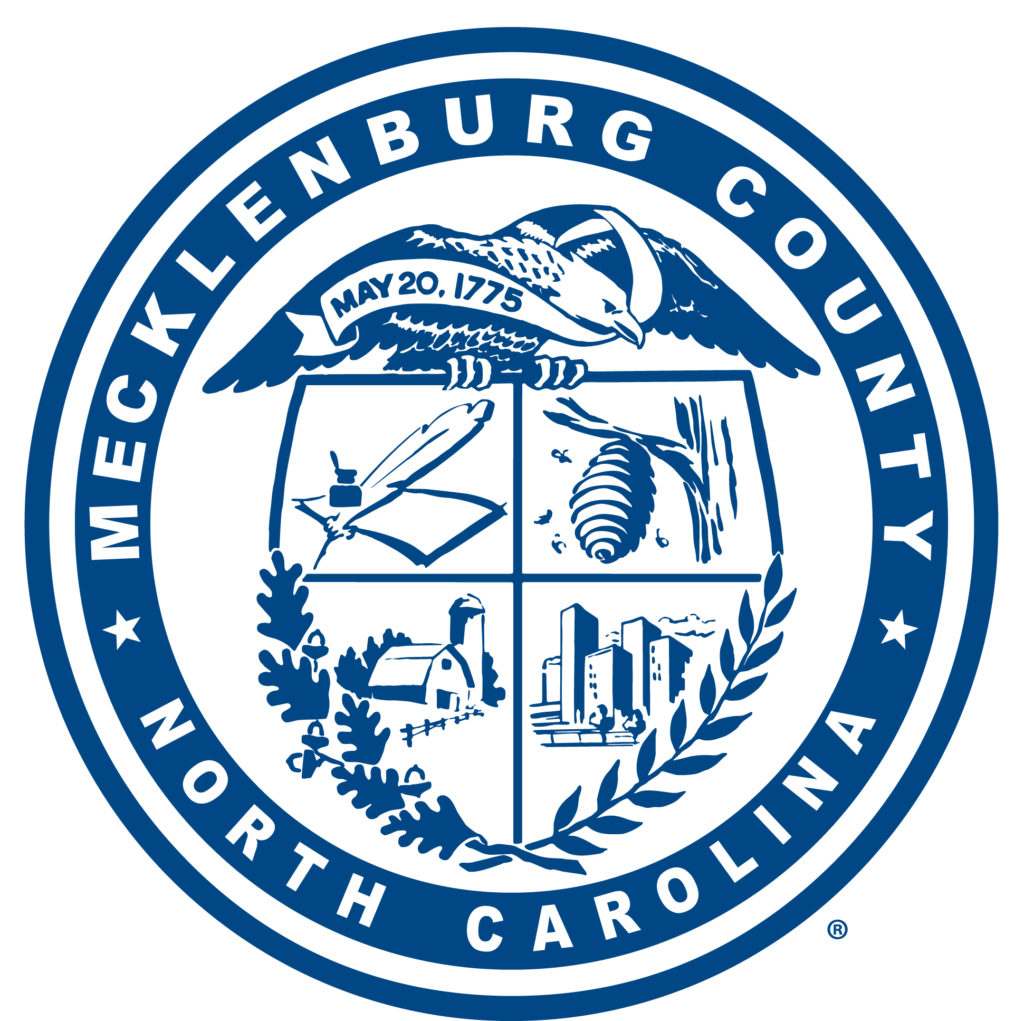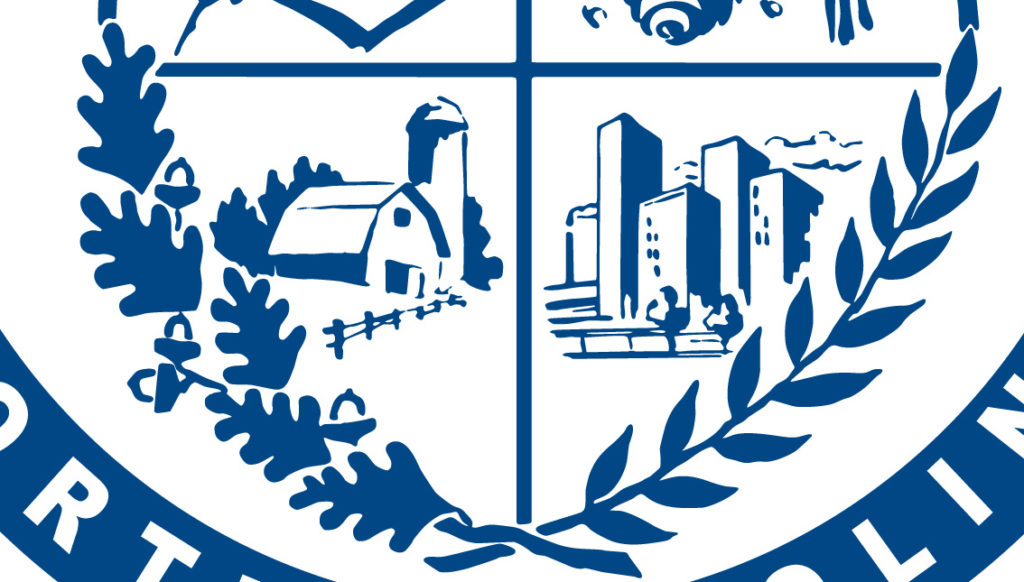
The Mecklenburg County seal can be found on everything from letterhead to buildings. But what are all of those little images that make up the seal? And an even better question, why are they a part of it? And while we’re at it, how did we even end up with a County seal?
It may be best to start at the beginning. Sometime around the late ‘50s to early ‘60s, the Chamber of Commerce sponsored a contest to design a County seal – something that represented the County’s history, its growth and its future. The winning design, and the one that adorns the side of the County Courthouse, vehicles, signs and numerous other things, was designed by Harvey Boyd, an employee in the Art Department of the Charlotte Observer. The Board of County Commissioners officially adopted it in 1964.
Now, here’s a breakdown of what all those images mean and why they’re included in the seal:
- The date on the banner, May 20, 1777, is when the Mecklenburg Declaration (also known as the Meck Dec) was signed. (This date is also on our state flag and state seal).
- The inkwell, quill pen and paper symbolize the Meck Dec.
- The hornet’s nest represents the entire community, which British General Charles Cornwallis referred to as a “hornet’s nest” of rebellion during the Revolutionary War. (You’ve probably also seen the hornet’s nest on the side of Charlotte-Mecklenburg Police cars. It’s the black scribble on the side.)

- The farm buildings represent agriculture and our community’s history in that industry.
- The office buildings represent the growing urban areas.
- The bottom left branch represents the County’s traditional times and the right branch representsmodern times.

So, there you have it — all you ever needed to know (and more!) about the history of the Mecklenburg County seal. Now when you see someone squinting, trying to discern the details, you have a little bit of knowledge to pass on.
